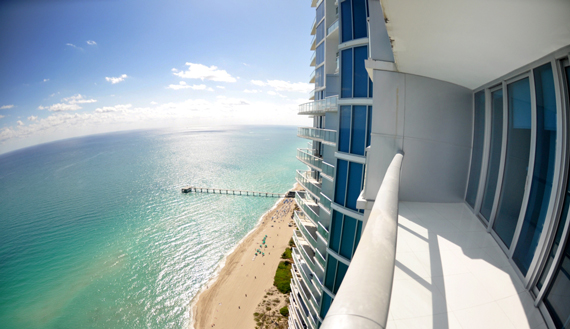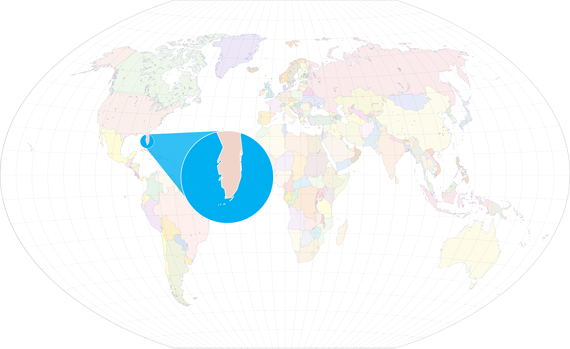Trending
A seismic shift in foreign buyers?

On Dec. 1, 2015, Argentine journalist Jorge Lanata and his wife Sara Elizabeth Stewart Brown bought a three-bedroom, three-bathroom unit at Asia, on Brickell Bay Boulevard, for $2.6 million.
Two weeks later, Estanislao Garavilla, the chief executive officer of Spain’s largest canned tuna company, Grupo Conservas Garavilla, paid $1.9 million for a three-bedroom unit on the fifth floor of a Key Biscayne condo building at 548 Fernwood Road. And in early February, Brazilian Internet entrepreneur Guilherme Barthel and his wife Tania picked up a 10th floor unit with three bedrooms and three bathrooms at the Jade Beach condominium at 17001 Collins Avenue for $1.9 million.
But Lanata, Garavilla and Barthel appear to be part of a dwindling demographic in South Florida that over the past year has forced some developers and other real estate professionals to seek new buyers from elsewhere.
Five years ago, Latin American and European investors fueled the resurgence of the area’s real estate market by paying record-breaking prices for luxury residences on or near the water. Recently, that spigot seems to be running dry. Due to a global recession, unstable governments and a devaluation of currencies in multiple countries in Europe and Latin America, the number of foreign buyers is on a downward track.
While this trend has been an ongoing topic of discussion in real estate circles, recent reports analyzing South Florida’s international buyers market bring increased urgency to the chatter. The numbers indicate stagnant or declining numbers of buyers from Argentina, Brazil, Canada, Colombia, Mexico, Russia and Venezuela — countries that have funneled thousands of buyers to South Florida over the past five years.
“A lot of South American currencies are weak compared to the U.S. dollar,” said Mark Meland, a real estate attorney with the Miami law firm Meland Russin & Budwick. “That’s why we are seeing a slowdown in the real estate market. My developer clients are certainly concerned, but they are not panicking yet.”
At the early stages of the current real estate cycle, which began in 2011, Latin American and European capital was extremely strong against the U.S. dollar. That gave investors from those regions significant purchasing power to buy pre-sale units in coastal cities such as Miami Beach and Sunny Isles Beach, as well as Miami’s downtown core, according to a first quarter residential market report released in January by the Miami Downtown Development Authority (DDA).
“Due to the recent advance of the U.S. dollar versus most South American and European currencies, the advantageous buying power of foreign investors has been diminished significantly since 2011,” the report states. “While the Euro has not diminished as much as the South American currencies, its slide versus the U.S. dollar has only recently started and is expected to continue to decrease over the next six to 12 months.”

Jade Beach
Right now, Venezuela is in the midst of a catastrophic meltdown that will shrink the South American country’s economy by eight percent this year after already contracting 10 percent last year, according to the International Monetary Fund. The Venezuelan bolivar has lost 32 percent of its purchasing power against the U.S. dollar since 2011, the DDA report points out.
Brazil, which has the second largest number of real estate buyers in South Florida, is entering the worst recession since 1901, as its economy is projected to shrink by almost 3 percent, a central bank poll of 100 economists shows. The Brazilian real has lost more than half of its purchasing power against the U.S. dollar since 2011, while the currencies for Argentina and Venezuela — two other significant South American markets — have lost 70 percent and 32 percent, respectively.
In January, the Miami Association of Realtors and the National Association of Realtors released a report on the international buyers market in South Florida from September 2014 to August 2015. During that 12-month period, foreign buyers accounted for 36 percent of closed sales in South Florida, buying an estimated $6.1 billion in properties, with 74 percent of those buyers paying in cash.
Argentina and Colombia have lost considerable ground since 2014 when the two countries held 16 percent and 12 percent, respectively, of South Florida’s foreign market. Last year, foreign buyers from both countries accounted for 10 percent each of residential sales to foreigners. The Realtors study also noted that there were significantly less international buyers of South Florida condos in 2015. Condos accounted for 52 percent of residential sales to foreign buyers last year, down from 65 percent in 2014.
The movement in the number of buyers from other countries in the past two years, coupled with the growing concern about unfavorable exchange rates for foreign investors, indicates Miami could possibly see an even bigger decline in international buyers. On top of that, Latin America’s widespread recession is not subsiding anytime soon, according to a March 16 market report by Ricardo Aceves, a senior economist at the Barcelona-based independent research firm FocusEconomics.
“The outlook for Latin America is getting worse,” Aceves wrote. “Due to an environment of low commodities prices, less positive global growth prospects and volatility in financial markets, the region is likely to continue seeing a deterioration in the terms of trade, capital outflows and pressure on the exchange rates.”
The ongoing trend is also evident in the small number of closings in Miami-Dade County from Dec. 1, 2015 to Feb. 12, 2016 that involved foreign buyers. During those three months, buyers from other countries bought just 16 of 139 luxury condos and mansions ranging between $1 million and $10 million, according to a TRD review of Miami-Dade property records and multiple listing services data.
Meanwhile, all-cash transactions, the preferred method of payment for most foreign buyers, accounted for 52.4 percent of total closed sales in February, down six points from the previous year, according to the Miami Association of Realtors.
There is no denying that the herd of foreign buyers has thinned and will continue to dissipate, said Ugo Colombo, the Italian-born CEO of CMC Group, which is developing the 550-unit condo tower Brickell Flatiron.

Asia
“Yes, there are less people willing to invest,” Colombo told TRD. “But the Latin American market has always been like a game of musical chairs. One goes down, but another stays up. Right now, Mexico is picking up where Brazil left off three years ago.” The developer noted that more than 60 percent of Flatiron’s buyers so far are from Latin America.
Despite the changing tides, real estate professionals are doing their best to temper the negative outlook on foreign buyers. Andrés Asion, vice president of sales at the real estate development and brokerage firm Fortune International Group, said Argentinian, Colombian and Mexican buyers are fueling demand in the Brickell submarket for units in the higher seven-figure price range, while Venezuelan buyers are targeting units under $1 million.
“The value of the bolivar makes it harder for Venezuelans to buy now,” Asion told TRD. “And it is a lot harder for them to move their money out.”
Asion said Brickell Heights, SLS Lux and Gran Paraiso are the projects that have drawn the most buyers from the four countries south of the U.S. border.
Auberge Residences Miami, the Related Group’s three-tower mixed-use project in the works at 1400 Biscayne Boulevard, has started to attract a large number of Mexican buyers, he added.
Condo sales at the property launched in early February and the broker now has more than 20 contracts with people from Mexico who are paying an average of $575 a square foot, he said. Asion noted that Mexican buyers are looking for value and a great place to park their money due to security concerns in their country and the weakening of the peso against the dollar.
At the same time, the Miami-based sales agent acknowledged that foreign buyers no longer feel the same sense of urgency to reserve a condo as they did when the current cycle was at its peak. “When a project launches, they don’t feel they have to jump in and buy right away,” he said. “Sales are definitely slower.”
Another wildcard that could further dampen foreign investments in South Florida’s real estate market is the U.S. government’s decision to further scrutinize all-cash deals involving foreigners buying seven-figure properties in Miami and Manhattan.
On March 1, the Treasury Department’s Financial Crimes Enforcement Network (FinCEN) began requiring title companies to disclose the true owners of shell companies paying in cash on all transactions of $1 million and above in Miami and $3 million and above in Manhattan. The tracking period for those purchases will last 180 days, according to the order.
Whether FinCEN’s action will further dampen foreign buyers’ interest in Miami real estate is still open for debate. While nearly three-quarters of all-cash deals last year were made by international investors, a majority were for properties priced at less than $3 million, according to the National Association of Realtors.
In January, Related Group’s CEO Jorge Pérez told Bloomberg News that the Treasury Department’s enforcement would have a crippling effect on luxury condo purchases. “It’s a killer for Miami — not because we’re afraid of drug buyers,” Pérez said. “You have to remember that a lot of wealthy people, particularly in South America, are very, very shy about disclosing their wealth.”
There were 31 real estate transactions between $1 million to $10 million in the first two months of 2016 in which the purchaser was a limited liability company or a nameless trust, according to MLS data. One third of those LLCs have not disclosed their true owners, including some of the biggest buyers of Miami condos.

South Florida may see an uptick in buyers from China and other countries outside of Latin America.
An entity listed as Miami Sun Holdings IV, for instance, bought a two-bedroom unit on the 14th floor of the Continuum on South Beach for $8.8 million on Jan. 19. The LLC lists no members or managers. It was formed on Nov. 18, 2015 and its registered agent is CT Corporation System of Plantation.
Three days later, Delaware-based Givaman LLC purchased a four-bedroom and three-bathroom condo at the Trump Royale at 18201 Collins Avenue for $5.2 million. Another untraceable LLC called NGL Carlton bought a two-bedroom unit on the 35th floor of the same building for $1.1 million.
Yet, real estate attorney Meland believes the FinCEN order will have little impact on a foreign buyer’s decision to purchase seven-figure properties in Miami. He noted that the federal government does not require title companies to disclose buyers who wire transfer funds to buy luxury condos or mansions. The order only applies to deals in which funds are physical U.S. currency, a cashier’s check, money order or traveler’s check, Meland said.
“We have only dealt with wire transfers for several years to avoid any problems such as fraudulent cashier’s checks,” Meland said. “If you talk to most [real estate law] firms, it’s pretty much the same thing. It’s too much of a risk to deal with anything but wire transfers.”
To soften the blow of the Latin America downturn, South Florida real estate professionals and developers have been ramping up efforts to establish a pipeline to Chinese buyers. And there have been an increasing number of projects seeking funds from investors in China through the EB-5 immigration visa program over the past 12 months.
Among the Miami projects looking to secure EB-5 investors are Skyrise Miami, the 1,000-foot-tall observation tower by Jeff Berkowitz, the 83-story Panorama Tower by Tibor Hollo and a mixed-use three-tower project by an affiliate of China City Construction Company (CCCC) and American Da Tang Group.
The entry of the two Chinese conglomerates to the South Florida real estate market is a sign the city could soon experience a steady influx of Chinese buyers and investors. In December 2015, the joint-venture partners paid $74.7 million for a development site at 1430 South Miami Avenue in the Brickell area. The estimated $875 million project will include residential condos and a hotel, as well as office and retail space.
In Miami Beach, American Da Tang Group and CCCC paid $38.5 million for developer Don Peebles’s Bath Club Estates oceanfront site at 6747 Collins Avenue last October. The 1-acre property has been approved for up to 60 residential units and 150 hotel rooms.
Ronald Fieldstone, a Miami attorney specializing in EB-5 investment projects, said CCCC and Da Tang hope to raise $350 million of the construction cost from Chinese investors.
“Several development companies are in China marketing homes and condos either for personal use or investment,” Fieldstone said. “I personally believe you will see far greater Asian influence in South Florida.”
Local immigration attorney Roger Bernstein, who owns American Life Investments, an EB-5 regional center that finds investors for development projects, said wealthy Chinese investors are just beginning to see Miami as an attractive location to put their money in. Da Tang and CCCC are going to spur other Chinese developers to follow suit, he said, noting that those developers will attract Chinese real estate buyers, in turn.
The federal visa program “really creates a bridge between China and Miami,” said Bernstein. “While the buying of a condo is not tied to EB-5 investments, investors making a loan to the developer for construction could possibly have an option to buy condos in the building. The condos are also being marketed in China.”
Adding a Chinese buying market to South Florida’s real estate industry lessens the risk of the volatility in Latin America and Europe leading to an economic slowdown in the tri-county region.
“I think it is a great thing for South Florida to have different, strong foreign groups investing in this marketplace,” Bernstein said. “You will have a better economy and a healthier real estate market.”




